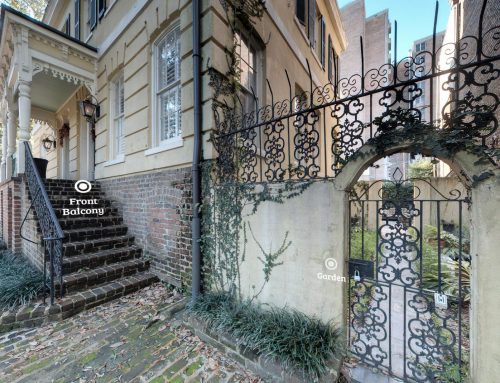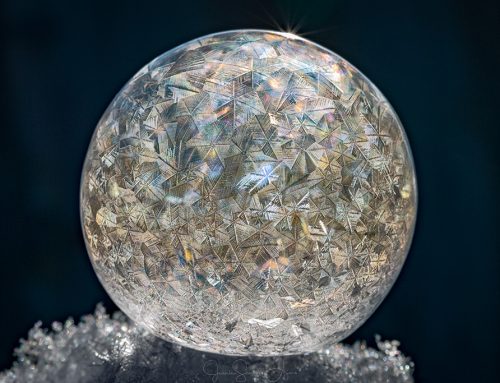ORIGINALLY PUBLISHED ON TROLETTIPHOTO.COM
As you can see from the image below, infrared photography is anything but new for me. I’ve used infrared film, both color and B&W in the past. My favorite Kodak infrared film being no longer manufactured, I decided to venture into Digital Infrared Photography. Although some cameras are able to capture infrared without being converted, a full professional conversion facilitates composition and reduces exposure times significantly.
Here’s my current situation, I no longer have an infrared camera. My old body now has an over abundant amount of burnt pixels that have just become an overwhelming task to deal with in post processing. Having an older Nikon D300s camera body that has more than earned its keep, I sent it to Nikon for an overall. The worn out bayonet was replaced and other necessary adjustment were completed, making the camera work like new. The cost was covered by L. L. Lozeau’s 5 year extended warranty. At this point it just made sense to get this camera converted. I decided to go with a Full Spectrum Conversion as I didn’t want to be limited to only one specific type of infrared filter. I wanted to take advantage of the camera sensor’s full range, from UV to the deepest infrared.
Naturally my first thought was lifepixel.com out in Washington State. They were the first to offer consumers a full line of infrared conversion services in the United States. Additional research brought me to kolarivision.com, in New Jersey. Offering similar services as lifepixel.com, kolarivision.com appeared to be overall less expensive.
I figured I would just mail the camera during one of my US trips to avoid the expensive shipping rates attributed with Canada Post. I also wanted to avoid any hassle with Customs getting my camera shipped to and from the US. Any of these factors would have a significant impact on the final cost of the infrared conversion.
Further research on the Internet lead me to find a small camera repair shop in Canada, actually in the Province of Quebec. Situated in Levis, a city just a few steps from Quebec City, the province’s capitol. Atelier Jacques Guyon, Réparation de matériel photographique actually performed infrared conversions. A Google search quickly revealed some satisfied customers who used the conversion services.
The different infrared conversions are well explained on the Atelier Jacques Guyon, Réparation de matériel photographique web site. Although Lifepixel.com filters are recommended, I opted for a Full Spectrum Kolarivision.com filter. Kolarivision.com‘s pricing is lower and I obtained mine on promotion making it even more cost efficient. After a quick email exchange with Mr. Guyon, I shipped my D300s to Levis, Quebec.
The conversion was completed quickly and returned by Purolator at very competitive pricing, insurance included. Mr. Jacques Guyon provided me with some images to better illustrate the Infrared conversion process itself.
Looking deep inside the Nikon D300s, (Mirror Lifted) we can see the Low-Pass filter (Hot Filter) with its bluish tint. That’s what has to come out in order to be replaced with the new Full Spectrum filter, or a specific IR Sensor Filter of your choice.
Once the rear cover of the Nikon D300s is removed, the electronics are revealed and we can quickly see how things can become a little complicated. There’s a dozen or so ribbon cables and a few soldered ones to be removed. One needs to be skillful as to not damage anything.
As the circuit board is carefully removed from the back of the Nikon D300s, the sensor assembly is revealed. This is were things will get complicated as dust will now become an issue.
This module has all the necessary connectivity to the sensor. The Low-Pass filter (Hot Filter) and the dust cleaning system are also secured atop the sensor.
Once both filters are carefully removed from the sensor assembly, the blue tint becomes very apparent. Both filters need to be removed. The Low-pass filter (Hot Filter) blocks IR but also helps control moire. The second filter, the one with the wires is the dust cleaning system. It creates an electrified anti-static field that pushes dust away. However it also filters infrared light. It will be removed but not replaced. It’s the Low-pass filter that will be replaced with the IR filter of your choice, in my case a clear full spectrum filter. (Not shown as to reduce the risk of dust contamination) This filter replacement eliminates the Moire control of the Low-pass filter, greatly improving the sharpness of your images.
Why I chose a Full Spectrum UV IR conversion?
With a traditional infrared conversion, you’re limited to one type of filter, the one you chose. Yes you can add a filter on your lens to filter deeper, but not less infrared. One who chose a 650nm conversion can add a 720nm or 850nm filter on the lens but can never go back to allow more natural light below the 650nm wave length.
Focus is an issue to consider with a DSLR. When your camera is converted to IR with an Infrared filter on the sensor, light is different in the viewfinder than it is on the sensor. Focusing while using the viewfinder is but an estimated adjustment made by your tech. For accurate focusing you will need to use liveview. Naturally there’s no issue with a mirrorless camera.
With a full Spectrum converted camera, your sensor is open to the entire light range from UV to Infrared passing by visible light. You can even install a filter on your lens that only allows visible light to pass through, giving you the ability to capture images like a standard non converted camera. On a full spectrum camera the filter you choose is placed on the lens. The viewfinder and the sensor see the same filtered light at the same time. Therefore focus remains identical in liveview as through the viewfinder.
The inconvenience is that you’re limited to using only liveview when photographing in the infrared light spectrum as the human eye is unable to see the infrared light. For UV photography you will need to acquire UV specific lenses as the glass in traditional lenses filters a great deal of the UV spectrum on its own. An example of a UV specific lens would be the Nikon 105mm F4.5 UV.
The ability to establish a white balance under infrared conditions is also something to consider when choosing a camera to be converted. Nikon’s line of professional DSLR bodies are unable to acquire a white balance under 2500K. On the flip side most of Nikon’s consumer bodies (I.E. D60, D3100) including the mirrorless Nikon 1 bodies do just fine. Same with Adobe Camera RAW as it’s limited to 2000K and infrared would be in the 1800K range. You will need to create a DNG profile for your infrared camera in Adobe to properly display and process your images.
The work performed by the atelier Jacques Guyon, Réparation de matériel photographique was absolutely top notch. Yes my D300s body had apparent signs of use, but it was handled with the greatest care and no apparent signs of it being opened for the conversion were apparent on the camera body or the screws.
KOLARIVISION – kolarivision.com
Attelier Jacques Guyon – reparationdecamera.com
Réparation de matériel photographique
41 Avenue Robitaille,
Lévis, Québec. G6Z 8N4
TEL: 418-832-5312
[amazon_link asins=’B0000AIS2B,B003TY10AS,0936262389,1608959619,1608959252,1579907725,B0181FVAHW,0863433731,1598633554,047040521X|B003TY2UQG,B0000AIS2B,0936262389,1138200174,1608959252,1608959619,0863433731,B00VB469RM,1983523607,B072N2CSGX|B0000AI1FZ,B0000AIS2B,0936262389,1608959619,1608959252,B00VB469RM,1579907725,1584280492,B007G0BK42,1138200174′ template=’ProductCarousel’ store=’stevetrolep0f-20|stevetrolepho-20|stevetrolepho-21′ marketplace=’US|CA|UK’ link_id=’559620c1-551b-11e8-bc31-d996dbc2fdb5′]











Leave A Comment